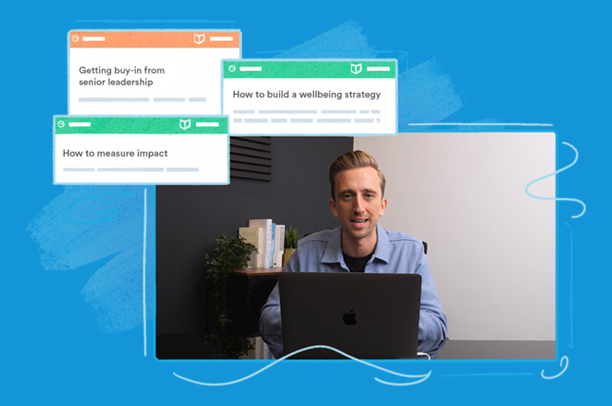In 2022, hybrid working has become the ‘new normal’ – but is it really the best of both worlds?
During the COVID-19 pandemic, many organisations were forced to work remotely. This gave both employees and employers the opportunity to realise the benefits of remote working. However, now that restrictions have eased, many also appreciate the benefits of being in the physical workplace.
A recent report by Scalable investigated the impact that hybrid working has had on employee wellbeing. They found that 42% had a better work-life balance, 33% were more productive and 29% felt happier. BUT… 31% now find it harder to switch off from work, 24% experienced increased stress levels, 30% now work longer hours and 27% feel more isolated.
With the statistics so mixed, we wanted to take a look at the pros and cons of hybrid working from an employee wellbeing perspective, bringing some of the key research into one place for you.
The benefits of remote working on wellbeing
Following the pandemic, research found that 92% of people now expect to work from home at least once per week and 80% of people expect to work from home at least three times per week. But why do so many employees want to work remotely?
Buffer asked people what they see as the biggest benefit of working remotely. They found that people benefit most from (in order of popularity) the ability to have a flexible schedule, the flexibility to work from anywhere, not having to commute, the ability to spend more time with family and the ability to work from home.
Global studies have also found that 7 in 10 employees say their job satisfaction and work-life balance has improved since the shift to remote working.
The drawbacks of remote working on wellbeing
Despite the many benefits of remote working, research has also found that the wellbeing of employees can be negatively affected when working remotely.
In the same Buffer report, they also highlighted employees’ biggest struggles when working remotely. These included: collaboration and communication, loneliness, not being able to unplug, distractions at home, being in different time zones to colleagues, staying motivated, taking vacation time and finding reliable wifi.
Technology seems to be a recurring challenge for remote workers. Scalable found that 79% of employees feel it is more difficult to do their job when working from home because they don’t have access to all the technology they need, or can’t access certain applications or data. This means that hybrid workers, on average, waste 6.96 hours per week due to a poor digital experience caused by a lack of technology or technology that doesn’t work. The end result is that hybrid workers are forced to work an extra 2.2 weeks per year, which leads to higher frustration, burnout and depression risk in employees. Additionally, poor digital experiences reduced job satisfaction in many employees (38%) and made employees want to leave their employment (18%).
Is hybrid working the best of both worlds?
It is for all of the reasons above that we were not surprised with the recent LinkedIn poll results from Everymind at Work’s Founder, Paul McGregor, finding that 72% of respondents feel their wellbeing is best when working hybrid, as opposed to 100% remote or 100% workplace-based.
It is important to note, however, that despite hybrid working being the most favourable option for employees, it does not come without its own challenges. For example, insights from a recent hybrid working Global Forbes Survey found that:
- 57% of respondents said they feel disconnected from their organisation and co-workers
- 62% said that limited networking opportunities with senior employees and co-workers negatively impact career growth
- 54% said limited social interactions with co-workers has had a negative impact on their mental health
- 70% of respondents indicated that the culture of trust between managers and employees needed improvement
It is therefore key that organisations understand the drawbacks of hybrid working to ensure they mitigate any negative effects by implementing the correct policies and procedures to support employee wellbeing.
To find out how HR can better support employees when hybrid working, sign up for our next free webinar on Wednesday the 2nd of March here. In this session, Paul McGregor will provide actionable advice on how to support employees in a dynamic working environment so they remain happy, healthy and productive. Covering topics such as how to prevent burnout, spotting the signs of ill-mental health virtually, how to approach wellbeing conversations remotely and how to help employees feel a sense of belonging (and more!).
Key Takeaway
Hybrid working truly can be the best of both worlds, especially if it is the employees choice and the employer has set remote working up for success.








